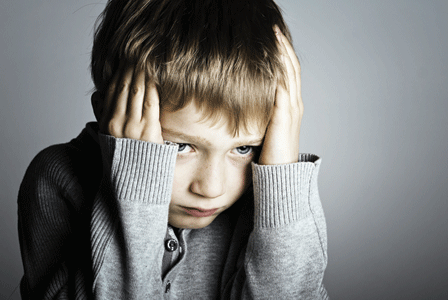
We watch news stories about social bullying by schoolkids. But bullying isn\’t just a problem in Canada; it\’s a global problem. So how do we deal with bullying?
Vancouver radio host Christy Clark was on air in the fall of 2007. Callers prattled on about various issues; one made an offhand but “callous” comment about bullies. Within minutes, another listener dialled in. She confessed to Clark that she practically fainted with anxiety as repressed memories of bullying surfaced.
The caller said she had been bullied as a child and had become a bully herself. She had done “awful” things to other children and although she had outgrown her bullying behaviour, she had not been able to deal with the guilt she still felt.
The call set something in motion inside Clark, who mulled over the caller’s distress and wondered what, if anything, could be done.
A sea of pink
Several weeks later the answer came in the form of a Globe and Mail story on Pink Shirt Day. The story centred on two Nova Scotia grade 12 students, David Shepherd and Travis Price. They faced up to a bully who threatened a grade 9 student, harassing him with homophobic slurs for wearing a pink shirt on his first day of school.
The youths went out and bought 50 pink tank tops with their own money and passed them out to other students to wear in protest. The sea of pink shirts sent the bully home with his tail between his legs. The story became an international sensation, garnering attention from American talk show host Ellen DeGeneres. Pink Shirt Day is now an international anti-bullying event.
“What an incredible statement to make,” Clark says. This story inspired her to wholeheartedly support Pink Shirt Day in BC (pinkshirtday.ca). But she discovered that many adults tend to dismiss bullying behaviour as kids just being kids.
A global problem
Bullying is much more serious than that. The World Health Organization (WHO) has decreed bullying a “global social health problem.”
Although Canadians tend to think of ourselves as basically kind and caring, the statistics show a darker side to our national psyche. A 2009 WHO report rates Canada 26th for bullying among both boys and girls—that’s worse than the US and 24 of 35 developed nations surveyed.
Although the rates of bullying and victimization among Canadian students have remained relatively stable over the past 15 years, Canada’s ranking has slipped on the world stage because other countries such as Britain and Norway have instituted successful national campaigns to address bullying problems.
Addressing the problem
Canada does not have a national anti-bullying program, and its provinces each take their own approach to the problem. Still, a number of privately launched Canadian anti-bullying programs have become internationally respected and copied, including Pink Shirt Day and Roots of Empathy (ROE).
ROE is aimed at kids from kindergarten to grade 8. A loving parent and baby visit the classroom every three weeks for a year. The interaction between mother and child and the teacher’s facilitation helps children learn to consider and understand other people’s feelings and responses. Such learning is considered as important as academic achievement—if not more so.
Bullying in Canadian schools happens every 7 minutes on the playground and every 25 minutes in the classroom, according to PREVNet (Promoting Relationships and Eliminating Violence Network). These statistics were gathered by Dr. Debra Pepler of York University and Dr. Wendy Craig of Queen’s University and were reported in their widely quoted research paper released in 1997.
“The prevalence of bullying has not changed much in the past decade,” Pepler told alive, adding that she believes the statistics are still valid today.
Pepler and Craig carry out research for PREVNet which was launched in 2006 to stop bullying in Canada and to promote safe and healthy relationships for all Canadian children and youth.
It starts young
Anyone who’s watched two toddlers fighting over a toy knows that using physical aggression to get what they want is normal at their age—and research shows why. Their verbal skills are not yet highly developed and hitting and grabbing things away from other children are ways to communicate their needs and wants.
Such behaviour tends to diminish by the time children are in elementary school. But not all children outgrow their aggressive tendencies.
According to a six-year study conducted by researchers at the University of Montreal, approximately 13.5 percent of children will evidence “typically high and stable levels of [physical] aggression.” Unlike most of their peers, these children continue to exhibit aggressive behaviour—and such behaviour spells future trouble.
“Highly aggressive children are at increased risk for violent delinquency, property offense, and conduct disorders in adolescence,” the researchers stated.
So how does normal childish behaviour turn into toxic bullying?
Intent to harm
Barbara Coloroso, a leading parenting expert and author of several best-selling books, describes bullying as “a conscious, wilful, and deliberate hostile activity, intended to harm,” in her book The Bully, The Bullied, and The Bystander (Collins Canada, 2003).
Bullying, she writes, is not about anger or conflict. It is all about contempt for another human being. It involves a sense of power and entitlement that allows the bully to control, dominate, and abuse his victim. Intolerance of differences is another hallmark of the bully as is the impulse to socially isolate those deemed not worthy of respect or care.
And make no mistake, Coloroso says in her book, bullying makes victims of all of us, not just those who are bullied. Bystanders, either passive witnesses or active supporters of the bully, are just as guilty of overlooking or ignoring justice.
High tech bullying
Today bullying has taken on new dimensions through cyber bullying. Social networking sites such as Facebook, text messaging, and email, have added new weapons to the bully’s arsenal. Bullies can remain anonymous while they encroach on the last bastion of safety for a child—at home where nearly all Canadian school-age children have access to a computer and the Internet.
Microsoft Canada, which tracks youth Internet safety, stated that in 2009, 40 percent of Canadian youth said they have been bullied online, up 25 percent since 2004.
Such behaviour reflects a mean streak in our culture: name-calling, putdowns, and violence are considered valid entertainment (a Facebook site encouraged kids to beat up anyone with red hair on Kick a Ginger Day, started in response to an episode of South Park, a satirical cartoon). Violence in all forms is glorified through film, video games, and extreme sporting events.
Diminishing empathy
In fact, empathy—a trait lacking in hard-core bullies—may be going out of style, according to a recent University of Michigan study that analyzed personality tests of 13,737 college students over a 30-year period.
The study found that today’s students scored 30 percent higher in narcissism scores than students did in 1979. Researchers recommend conducting further studies to determine whether the astronomical growth of social networking sites such as MySpace and YouTube and other types of electronic technology are increasing narcissistic tendencies.
They cite iPods and Tivo as technologies that allow people to personalize their entertainment and tune others out when they don’t feel like engaging. They note that the most sizeable empathy drop occurred before social networking sites such as Facebook and MySpace began to flourish. While these technologies may allow narcissism to flourish, they don’t know what caused the initial surge.
Whatever form bullying takes, it is something that all of us—parents, teachers, and concerned citizens—should take to heart. If all children don’t have a safe environment in which to live and learn, they won’t grow up to become healthy, productive members of society.
|
Dealing with a bully The key to helping your child deal with bullying is to help him or her regain a sense of dignity and recover damaged self-esteem.
—Source: Canadian Children’s Rights Council (canadiancrc.com) |





























